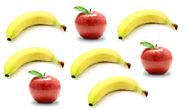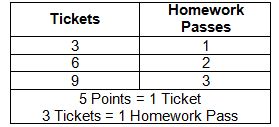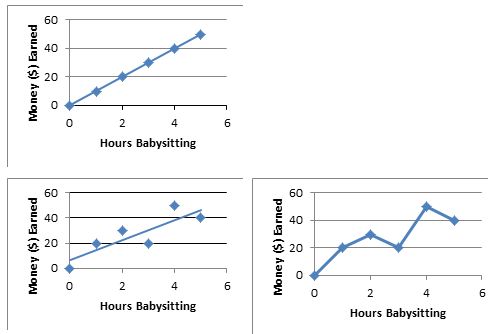Curriculum Resource Guide: Ratio and Proportions
BACK TO Curriculum Resource Guides
What is "ratio and proportions" and how is it taught in general education settings?
Essential knowledge in this content area
Precursors to Ratio and Proportion Ratio and proportion are not introduced until the middle grades in the Common Core State Standards; however, in grades 3-5, students experience and gain proficiency with multiplication and division, which is later, used to solve ratio and rate problems. Examples of these experiences:
- Equipartitioning: "producing equal sized groups (from collections) or pieces (from continuous wholes) as 'fair shares' for each of a set of individuals".[1] Here are two examples: (1) There are 15 pencils and 5 students in the class. How many pencils does each person get? Or (2) One brownie is shared among 4 people, which results in ¼ brownie per person.
- Multiplicative Comparisons: the maple tree is 3 times as tall as the lilac.
- Unit conversions: 3 ft. = 1 yd.; 6 ft. = 2 yd.; etc.
Ratios A ratio is the comparison between two values. The comparison can be part-to-whole (ratio of apples to total amount of fruit in a bowl) or part-to-part (ratio of apples to bananas). Ratios can be expressed in the following forms: 3/5, 3 to 5, or 3:5. It is important for students to understand that ratios have little meaning unless they know what the ratio represents. They should be able to state: "For every _____ there are _____." (Can also be stated as "___ to ___"; "_____ out of every ____"; "_____ parts to ____ parts").
Students should be provided practice using physical models to make sense of ratios. For example, below is a demonstration of four tires for every one car (4:1). Students are asked, "How many tires if you have three cars?"

Explain to students that by answering the question above they are creating an equivalent ratio. This comparison doesn't change if the values are varied multiplicatively by the same factor. A ratio of 6:4 holds true when multiplying both quantities by a given number. For example, 6:4 = 12:8 (multiplied both by 2) or 18:12 (multiplied both by 3).
The ratio also holds true if both numbers are divided by the same number or split by the same number. 6:4 = 3:2 (both numbers divided by 2).
Equivalent ratios can be created by multiplying both numerals in a ratio pair by the same positive number. Following with the ratio 4:1, to determine the equivalent ratio that results in 3 cars, students would multiply each number in the ratio pair by 3. So, 4:1 = 12:3. Thus, for every 12 tires there are 3 cars, or vice versa, for every 3 cars, there are 12 tires.
Below is an example of a more complex problem:
A store has a sale. T-shirts are 2 for $18. What would 6 shirts cost? How many shirts could you buy if you have $45? \[Solution: To find the price of one T-shirt divide $18 by 2. One shirt costs $9. Multiply $9 times 6 to get $54. To find the number of shirts that can be purchased with $45, divide by $9. Five shirts can be purchased with $45.\]
Break the problem into two parts. Start with the first question, "What would 6 shirts cost?" The student has been given the ratio 2:18. In the same way that equivalent ratios can be determined by multiplying both numerals in a ratio pair by the same number, they can also be determined by dividing both numerals in a ratio pair by the same number. To solve the problem of determining the cost of 6 shirts, it would be helpful to find the cost of 1 shirt by dividing both numerals by 2.

So, 1 shirt costs $9
We want to know the cost of 6 shirts so we will multiply the numbers in the ratio pair by 6.

The answer to the first question is: 6 shirts cost $54. Ratios can be displayed using a table or graph:
Showing structure in tables and graphs [2]
In the tables, equivalent ratios are generated by repeated addition (left) and by scalar multiplication (right). Students might be asked to identify and explain correspondences between each table and the graph beneath it (MP1).
Ratios can be plotted as ordered pairs:
Using the example above, we can find the points to plot by using the ratio \[number of shirts: cost\]. The number of shirts will be the x-coordinate and the cost will be the y-coordinate in the ordered pair. We found that 1 shirt costs $9, or 1:9, so our first ordered pair is (1,9). We can find the remaining ordered pairs by multiplying both numerals in the ratio pair by the same number.
Ratios can be used in problem solving by thinking about the total amount for each ratio unit. For example:
The ratio of smores to marshmallows is 1:2 and the camp counselor is making 21 smores, how many marshmallows does she need? [Solution: Student recognizes there are twice as many marshmallows as there are smores and multiples the total number of smores by 2. The answer is that she will need 42 marshmallows.]
Proportions A proportion is an equation stating that two ratios are equivalent. Students should be given opportunities to determine if two ratios are "proportional" (e.g., 1:2 and 3:6) or "not proportional" (e.g., 2:3 and 4:5). The graph below demonstrates proportional relationships:
Using these relationships proportions can be written such as 5:2 = 15:6 or 10:4 = 20:8.
In practice students might be given ratios and asked to determine if they are equal (proportional) or if one ratio is greater than or less than the other (not proportional).
There are several ways students can determine if two ratios are proportional. Below are three examples of how to do so:
| Ratios | 12:4 and 8:6 | 15:35 and 6:14 |
| Writing as fractions and determining common denominator | 
|

|
| Cross-multiplying | 
|

|
| Dividing to see if the quotients are equal | 
|

|
| Proportion |  (not proportional) (not proportional)
|

|
Common misunderstandings in this content area
- Students may not understand that, for example 3:9 is the same ratio as 1:3.
- Students may wrongly use direct division instead of proportional division in calculations. For example, if it takes 4 people 2 hours to decorate 200 cupcakes they might answer that it takes 2 people 1 hour. [The answer is that it would take 2 people 4 hours.]
- Students may use the equal sign incorrectly when describing proportional relationships. For example for the ratio 2:5 or "for every 2 there are 5" a student might incorrectly represent this by writing 2=5.
Prior knowledge/skills needed (can be taught concurrently)
- Multiplication
- Division
- Using calculator to multiply and divide
- Identify and use >, <, and = symbols to compare values
What are some of the types of activities general educators will use to teach this skill?
Activities from General Education Resources
- Use manipulatives to act out problems such as "There are 24 shells and three children. How many shells are there for each child?" or "Alyssa, Heidi, and Grant found 24¢. The want to share it equally. How many cents should each child get?"
- Give students several problems where they must determine which ratio is greater. Allow them to use a calculator to find the quotients to compare if needed.
- Give students several ratios and ask them to write each ratio in its simplest form.
- Ask students to draw a picture showing 4 pencils and a number of pens in which the ratio of pencils to pens is 2:3.
- Have students use a proportion to solve the following problem: "Out of the 32 students in health class, 24 prefer using gel toothpaste. Based on these results, how many of the 500 students in the school can be expected to prefer using gel toothpaste?"
Links Across Content Areas
- Literature:
- Read The Doorbell Rang by Pat Hutchins and have students illustrate how an increasing number of children can share cookies.
- Read the poem Jimmy Jet and his TV set by Shel Silverstein and ask students to create ratios to compare time spent watching TV to time spent doing other activities. [3]
- Social Studies:
- Ask students how many full terms Franklin D. Roosevelt served if he was president for 12 years. (Remind them that one term equals 4 years.)[4]
- Have students locate the scale on the map to create a proportion in order to calculate the distance between two cities. For example, if Charlotte is 8 inches from Raleigh and the scale is 2 inches equals 45 miles, what is the distance from Charlotte to Raleigh?[5]
- Explain to students that the ratio of the heads carved on Mount Rushmore is 1:12 or 1 inch to 12 feet. Ask students how they would use this knowledge to determine the actual size of the president's heads.
What Connectors to the Common Core Standards Are Addressed in Teaching "Ratio and Proportions"?
Link Core Content Connectors for the Common Core State Standards This guide is not intended to comprehensively cover all of the CCCs related to this topic. For further information on CCCs listed see Core Content Modules and General Education Resources listed in section 3 of this guide.
| Grade Differentiation | Core Content Connectors | Common Core State Standards |
| 3rd Grade | 3.NO.2e1 Solve and check one or two-step word problems requiring addition, subtraction, or multiplication with answers up to 100. | 3.OA.D.8 |
| 3.NO.3d4 Justify and label solutions as a result of making a comparison (e.g., compare 15 and 25 and label 25 as greater: 15<25) | 3.MD.B.3 | |
| 4th Grade | 4.NO.2d7 Determine how many objects go into each group when given the total number of objects and the number of groups where in each group or number of groups is not greater than 10 | 4.OA.A.2 |
| 4.PRF.1d2 Use objects to model multiplication and division situations involving up to 10 groups with up to 5 objects in each group and interpret the results | 3.OA.A.1 | |
| 5th Grade | 5.NO.2a5 Solve word problems that require multiplication or division. | 5.NBT.B.6 |
| 5.NO.2a2 Separate a group of objects into equal sets when given the number of sets to find the total in each set with the total number less than 50 | 4.NBT.B.6 | |
| 6th Grade | 6.PRF.1c1 Describe the ratio relationship between two quantities for a given situation | 6.RP.A.1 |
| 6.PRF.1c2 Represent proportional relationships on a line graph | 6.RP.A.2 | |
| 7th Grade | 7.NO.2f1 Identify the proportional relationship between two quantities | 7.RP.A.2 |
| 7.NO.2f2 Determine if two quantities are in a proportional relationship using a table of equivalent ratios or points graphed on a coordinate plane | 7.RP.A.2 | |
| 7.NO.2f3 Find unit rates given a ratio | 7.RP.A.1 | |
| 7.NO.2f4 Use a rate of change or proportional relationship to determine the points on a coordinate plane | 7.RP.A.2d | |
| 7.NO.2f5 Use proportions to solve ratio problems | 7.RP.A.3 | |
| 7.NO.2f6 Solve word problems involving ratios | 6.RP.A.3b, 7.RP.A.3 | |
| 7.ME.1d1 Solve problems that use proportional reasoning with ratios of length and area | 7.G.A.1 | |
| 7.ME.2e2 Solve one step problems involving unit rates associated with ratios of fractions | 7.RP.A.1 | |
| 7.PRF.1e1 Determine unit rates associated with ratios of lengths, areas, and other quantities measured in like units | 7.RP.A.1 | |
| 7.PRF.1e2 Represent proportional relationships on a line graph | 7.RP.A.2b | |
| 7.PRF.1f1 Use proportional relationships to solve multistep percent problems | 7.RP.A.3 | |
| 8th Grade | 8.PRF.1e2 Represent proportional relationships on a line graph | 8.EE.B.5 |
| 8.NO.3c3: Analyze provided information (e.g., a graph) to describe the relationship between two quantities. | 8.F.B.5 | |
| High School | H.PRF.1c1: Select the appropriate graphical representation of a linear model based on real world events | HSF-LE.A.1 |
| Performance Examples for Priority CCCs | |||
| Grade 3 | |||
| CCC | Performance Example | Essential Understandings: Concrete Understandings and Representations | |
| Numbers: 3.NO.2e1 Solve and check one or two-step word problems requiring addition, subtraction, or multiplication with answers up to 100.
(3.OA.D.8) |
Student selects equation that matches word problem, solves equation, then selects equivalent equation that can be used to check work.
Kunius had 3 weeks to sell cookies for school. He sold 6 boxes each week. Which of these will show how many boxes Kunius sold? 3 + 6 3 x 6 3 – 6 How many boxes did Kunius sell? Which one of these can be used to check your work? 3 + 3 + 3 18 – 3 6 + 6 + 6 |
Concrete Understandings:
|
Representation:
|
| Numbers: 3.NO.3d4 Justify and label solutions as a result of making a comparison (e.g., compare 15 and 25 and label 25 as greater: 15<25)
(3.MD.B.3) |
Student selects symbol to compare two numbers.
|
||
| Grade 4 | |||
| CCC | Performance Example | Essential Understandings: Concrete Understandings and Representations | |
| Numbers: 4.NO.2d7: Determine how many objects go into each group when given the total number of objects and the number of groups where in each group or number of groups is not greater than 10 (4.OA.A.2) | "Bethany and her friends decided to start a dog walking business after school to earn some spending money. Bethany has three friends, for a total of four people who want to walk dogs." Point to the picture of Bethany and her friends (provide a picture of four girls). "There are eight dogs that need to be walked." Point to the picture of the dogs (provide a picture of eight dogs). "Each person will walk an equal number of dogs. How many dogs will each person walk? You can use these blocks to help solve the problem."
|
Concrete Understandings:
|
Representation:
|
| Patterns: 4.PRF.1d2: Use objects to model multiplication and division situations involving up to 10 groups with up to 5 objects in each group and interpret the results (3.OA.A.1) | Present a paper with the following printed on it and read it aloud: "Ms. Smith is an art teacher. She is preparing to teach an art lesson to five students. Each student will need four markers to complete the art activity. You need to find out how many markers Ms. Smith will need all together."
Give the student 24 markers. "Use these markers to show me how five students would each get four markers. You may not use all the markers." If the student makes an error, model the correct answer and say "There should be five groups of four markers, like this." "How many markers does the teacher need all together?" |
Concrete Understandings:
|
Representation:
|
| Grade 5 | |||
| CCC | Performance Example | Essential Understandings: Concrete Understandings and Representations | |
| Numbers: 5.NO.2a5: Solve word problems that require multiplication or division. (5.NBT.B.6) | Problem 1: Present the note card with the following word problem on it and read aloud to the student "Ms. Wood's class is going on a field trip to the zoo. There are 9 people going to the zoo. It costs $11 per person for admission into the zoo. How much money does the class need in all? Show me your work as you solve the problem."
If the student does not generate a correct equation show them an already written equation: 9 x 11 = ______ "Solve the equation, how much money do they need?" Problem 2: Present the note card with the following word problem on it and read aloud to the student "While at the zoo, they decide to feed the donkey. The zoo sells bags of 36 carrots to feed to the donkeys. Remember, there are nine people on the trip. If they split it up evenly, how many carrots does each person get to feed to the donkey? Show me your work as you solve the problem." If the student does not generate a correct equation show them an already written equation:
"Solve the equation, how many carrots does each person get to feed to the donkey?" |
Concrete Understandings:
|
Representation:
|
| Grade 6 | |||
| CCC | Performance Example | Essential Understandings: Concrete Understandings and Representations | |
| Patterns: 6.PRF.1c1: Describe the ratio relationship between two quantities for a given situation (6.RP.A.1) | Show students the visual (below) and say: "A ratio is a comparison between two different amounts. Here is a picture of the fruit that the cafeteria is offering to students. There are apples and bananas." Point to an apple and a banana. Ask the student: "What is the ratio of apples to bananas?"
After they respond, then ask: "What is the ratio of bananas to the total amount of fruit?" |
Concrete Understandings:
|
Representation:
|
| Grade 7 | |||||||||||||||||||||
| CCC | Performance Example | Essential Understandings: Concrete Understandings and Representations | |||||||||||||||||||
| Numbers: 7.NO.3c3: Analyze provided information (e.g., a graph) to describe the relationship between two quantities. (7.RP.A.2) | Show the students the table (below) and read them the following "Mr. Gowen's class is selling pizza to the middle school's sports teams to raise money for a field trip. Each pizza has 12 slices. They need to buy enough pizzas to make sure everyone gets enough. Look at this table. In this column are the different types of sports, in this column are the number of players on each team, and in this column are the number of pizzas needed for each team. If there are 48 players, we would need 12 pizzas, if there are 24 players, we would need 6 pizzas, if there are 12 players we would need three pizzas. How many pizzas would be needed to feed the basketball team, which has 8 players?"
Present the next question and response options and ask: "What is the relationship between the number of pizzas and the number of players?"
|
Concrete Understandings:
|
|||||||||||||||||||
| Numbers: 7.NO.2f1: Identify the proportional relationship between two quantities (7.RP.A.2) | Show student the table (below) and say the following: "A proportional relationship is a relationship between two numbers where one number is a constant multiple of the other number. An example is the number of dimes in a dollar. There are always 10 dimes in 1 dollar. No matter how many dollars there are, there are always 10 dimes in one dollar." Show student the example below.
Number of dimes Number of dollars 10 dimes for 1 dollar Remove the previous visual and show students the new visual and word problem (below) and say: Jada delivers cases of water to different classrooms in the school. She delivered 4 cases of water (96 bottles of water) to Ms. Smith's class, 3 cases of water to Mr. Palmer's class (72 bottles of water), and 2 cases of water to Mr. Dragoo's class (48 bottles of water). What is the proportional relationship between cases of water and bottles of water?" Give student the response options to pick from.
What is the proportional relationship between cases of water and bottles of water?
|
Concrete Understandings:
|
Representation:
| ||||||||||||||||||
| Numbers: 7.NO.2f6: Solve word problems involving ratios (6.RP.A.3b, 7.RP.A.3) | Show the student the following word problem and read it aloud.
Jesse mows his neighbors' lawns to earn extra money. He mows 2 lawns an hour. That means the ratio of lawns mowed per hour is 2 to 1. A: Present the following question and read it aloud: "Jesse mowed lawns for 2 hours on Saturday morning. How many lawns did he mow?" B: Present the following question and read it aloud: "Jesse mowed lawns for 3.5 hours Saturday afternoon. How many lawns did he mow in the afternoon?" C: Present the following question and read it aloud: "If Jesse mowed 4 lawns in the morning and 7 lawns in the afternoon, how many lawns did he mow all together?" |
Concrete Understandings:
|
Representation:
| ||||||||||||||||||
| Patterns: 7.PRF.1f: Use proportional relationships to solve multistep percent problems (7.RP.A.3) | Give student the visual (below) and read it aloud to them:
Use a proportion to solve for how many students are 7th graders. ′′ x 600 = 40 100 ′′ |
Concrete Understandings:
|
Representation:
| ||||||||||||||||||
| Grade 8 | |||
| CCC | Performance Example | Essential Understandings: Concrete Understandings and Representations | |
| Numbers: 8.NO.3c3: Analyze provided information (e.g., a graph) to describe the relationship between two quantities. (8.F.B.5) | Show the student the following graph and read: "Mr. Tate's class earns points for good behavior. This graph shows how many points need to be earned to trade in for one ticket. This y-axis shows the number of tickets that each student has. This x-axis shows the number of points the student has earned. How many points must a student earn in order to earn one ticket?" Present response options (below).
Present Point Icons, Tickets Icons, and Homework Pass Icons (see below: individually cut up), and say "How many points do you need to get one homework pass?" Let students use icons to help them solve the problem. |
Concrete Understandings:
|
|
What are Some Additional Activities That Can Promote Use of this Academic Concept in Real World Contexts?
- Using maps, blue prints, and/or scale models require understanding proportions. When a student reads a map, they need to understand that the map is a proportion of the actual area represented. Have student use the key to determine the proportion of the map to the area represented.
- Have students apply proportions by calculating the dosage of a medicine for a given weight of a person (or of themselves).
- Ask students to increase a recipe to make four times as much and apply proportions to the measurements in the recipe.
- Ask student to calculate the total number of forks and napkins needed to set a place for four people at a total of 24 tables.
- Take students to the grocery store and select two similar products that have different prices and ask them to determine which item costs less per ounce.5
- Have students go through the newspaper to find a sales ad for a grocery store and locate an item that is 2 for 1. Have them locate the item to find the price of one item and then calculate how much they would pay to purchase 8 items.5
- Teach students to use a ratio to calculate tips and have them practice calculating tips for different situations (hair cut, taxi ride, restaurant, etc.).
How Can I Further Promote College and Career Readiness when Teaching "Ratio and Proportion"?
Ideas for Promoting Career/ College Ready Outcomes Communicative competence Students will increase their vocabulary to include concepts related to "ratio and proportion," and should be able to read a ratio using correct terminology. In addition, students will be learning concepts such as: "equal", "every", "part", "same", and "different." Fluency in reading, writing, and math Students will have opportunities to increase their numeracy and sight word fluency while participating in problem solving related to "ratio and proportion" such as number recognition, counting, one-to-one correspondence, and reading concepts that include the use of an understanding of equal and same. Age appropriate social skills Students will engage in peer groups to solve problems related to "ratio and proportion" that will provide practice on increasing reciprocal communication and age appropriate social interactions. For example, students might work together with their peers to find the distance between cities on a map using scale drawings. Independent work behaviors Ratios and proportions are used in many real-life work settings. For example, janitors may need to mix chemicals (ratio of bleach to water), hair stylists need to mix hair chemicals for permanents and coloring, lawn maintenance workers may mix weed killer, bricklayers need to understand ratios to make up mortar, child care workers and nurses assistants may need to understand ratios for mixing things like juice and water, gardeners and construction workers need to understand scale drawings, and bakers and chefs may need to adjust recipes to account for increases in serving size. By solving real life problems related to "ratio and proportion" students will improve work behaviors that could lead to employment. Skills in accessing support systems At times, students will need to ask for assistance to complete activities related to "ratio and proportion" which will give them practice in accessing supports. Students will gain practice asking for tools such as calculators. They can ask a peer to complete the physical movements of the tasks they are not able to do themselves. Be sure to teach students to ask versus having items or supports automatically given to them.
How Do I Make Instruction on "Ratio and Proportion" Accessible to ALL the Students I Teach?
Teach Prerequisites and Basic Numeracy Skills Concurrently:
Remember that students can continue to learn basic numeracy skills in the context of this grade level content. Basic numeracy skills that can be worked on as a part of a lesson relating to ratio and proportions:
- Number identification
- Counting
- One-to-one correspondence
- More/less
- Greater than/less than
- Same and equals
Incorporate UDL: Universal Design of Learning When Teaching Area
| Some examples of options for teaching Measurement and Geometry to students who may present instructional challenges due to: | ||||
| Sensory Differences such as Blindness, Visual Impairment, Deafness, or
Deaf/Blindness |
Physical Disability or Motor Differences (such as weakness or motor planning difficulty) | Extremely limited evidence of experience/ skill or motivation/ attention. | Lack of or extremely limited use of speech. | |
| Options for Representation | Provide auditory options
Provide tactile options:
Provide visual and manipulative options to scaffold representation of concepts:
|
Reduce Physical Effort
|
Illustrate through multiple media
Illuminations http://illuminations.nctm.org/Search.aspx?view=search&type=ac Math Open Reference http://www.mathopenref.com/ There are many resources listed here: http://www.udlcenter.org/implementation/examples
|
Provide customized display of information
|
| Options for Expression | Vary the methods for response by:
|
Provide options for responses/expression:
Optimize access to tools/ alternatives for responding:
|
Provide multimedia options for responses/expression:
|
Provide options for modes of communication:
|
| Options for Engagement | Recruit interest by providing choices:
Increase personal relevance:
Provide tactile options for engagement:
|
Recruit interest by increasing personal relevance:
|
Recruit interest by providing choices:
Provide options for sustaining effort and persistence:
Increase personal relevance:
|
Recruit interest with modes of communication:
|
CCR & Standards for Mathematical Practice Table
- ↑ Confrey, J., Maloney, A. P., Nguyen, K. H., Wilson, P. H., & Mojica, G. F. (2008). Synthesizing research on rational number reasoning. Paper presented at the National Council of Teachers of Mathematics Research Presession, Salt Lake City, UT.
- ↑ Retrieved from http://commoncoretools.files.wordpress.com/2012/02/ccss_progression_rp_67_2011_11_12_corrected.pdf, p.6
- ↑ Willoughby, S. S., & SRA/McGraw-Hill. (2003). SRA math: Explorations and applications. Worthington, Ohio: SRA/McGraw-Hill.
- ↑ Willoughby, S. S., & SRA/McGraw-Hill. (2003). SRA math: Explorations and applications. Worthington, Ohio: SRA/McGraw-Hill.
- ↑ Bailey, R., Day, R., Frey, P., Howard, A. C., Hutchens, D. T., McClain, K., Moore-Harris, B. Glencoe/McGraw-Hill. (2004). Mathematics: Applications and concepts. New York: Glencoe/McGraw-Hill.
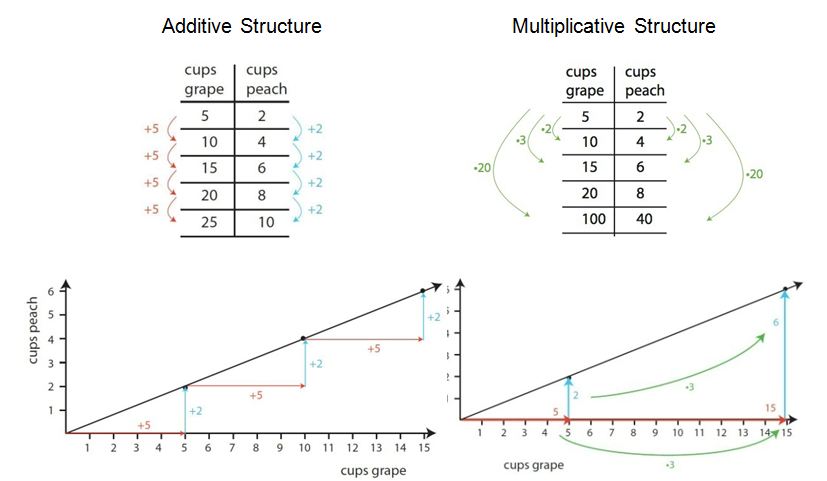
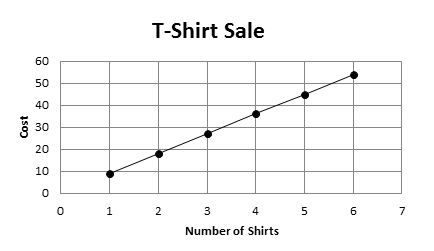

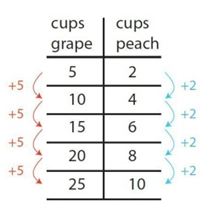










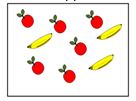
 ______
______
